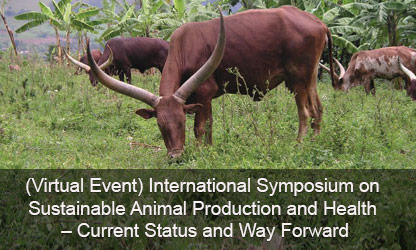The main work areas of the Section fall into animal nutrition, reproduction and breeding, and animal health. It runs a laboratory in Seibersdorf, Austria and works with a global network of veterinary diagnostic laboratories.
As part of its work on animal nutrition, the Section develops and validates methodologies, protocols and guidelines for the application of isotopic and related techniques to evaluate the nutritional value of a wide range of conventional and non-traditional feeds. It assists Members States to improve grassland and rangeland management to reduce pasture degradation and conducts training on the use of supplements and additives to increase the productivity of farm animals and reduce the greenhouse gases they emit.
In the field of animal reproduction and breeding, the Section develops protocols and guidelines that help characterize the biodiversity of livestock and use it more sustainably. It provides services for Member States, specifically to animal genetics laboratories and livestock professionals, that include training on the application of nuclear and molecular techniques to identify suitable breeds and select superior animals for greater productivity and adaptability. It also delivers training on assisted reproductive technologies that have the goal to increase the utilisation of superior animals and to enhance animal production for greater economic returns.
Transboundary animal and zoonotic diseases are at the centre of the Section’s work in the area of animal health. Through its laboratory in Seibersdorf and its network of collaborating laboratories, the Section develops protocols, guidelines and standard operating procedures that create the framework for the application of nuclear and nuclear-derived immunological and molecular technologies for the early and rapid diagnoses, prevention, control and eradication of these diseases. It also produces guidance material for the application of irradiation techniques to produce vaccines for the prevention of animal diseases and stable isotopic techniques to trace and monitor the movement of diseases and their vectors.





